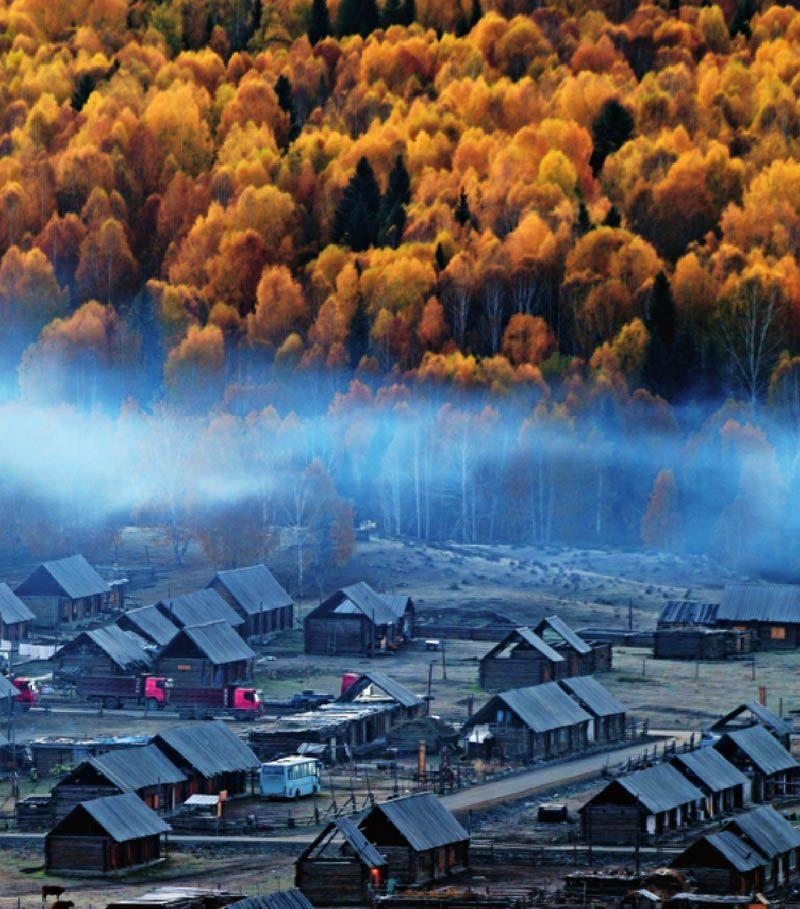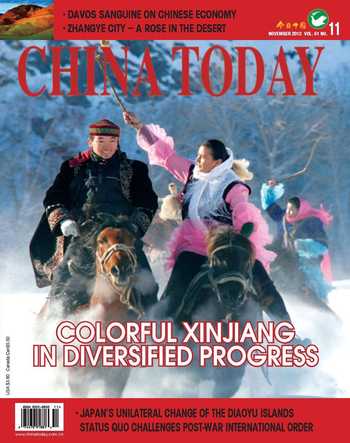Colorful Xinjiang in Diversified Progress



XINJIANG generally brings to mind magnificent natural scenery, abundant fruit harvests and graceful Uygur women. It is indeed an ideal international tourist destination.
Home to multi-ethnic groups and covering a vast geographical area brimming with natural resources, Xinjiang offers still more. Although there is a sizable gap between Xinjiang and inland China in terms of economic development, in recent years both the central and local governments have focused on promoting Xinjiang as an economic powerhouse bridging Asia and Europe.
Communication with the Inland
The last couple of years have seen vast improvements in the housing conditions of thousands of farmers living in Kashis Shache, Zepu, Yecheng and Bachu counties. This is one of 115 projects that Shanghai is financing for the current five-year period, involving around RMB nine billion in total. Their completion is expected in 2015. Other than sponsoring livelihood projects, Shanghai has also invited well-known experts to Kashi and provided dozens of training courses on such subjects as public services and health care, basic education, urban and rural construction, agriculture, science and technology, economy and trade, and employment.
The new round of Xinjiang aid programs whereby 19 provinces and cities, including Beijing, Tianjin, Shanghai, Guangdong, Zhejiang, Shenzhen and Shandong, made detailed plans to assist specific cities and counties in Xinjiang, began at the end of March 2010. Compared with the first round that started in 1996, the current program is more geographically diversified and benefits more of the local population. Aid has expanded to cover more sectors and the amount of funding has also increased. The central governments goal is to narrow the economic gap between Xinjiang and the inland as soon as possible and to ensure a comprehensive well-off society in Xinjiang by 2020.
In 2011, the first year of the five-year aid program, the assistance fund provided by the 19 provinces and cities exceeded RMB 10 billion. Other than improving livelihoods and equalizing public services, the central government has made clear that its aim is to "focus on fostering the capacity for self-development, promote industrial transfers, and transform resource and geographical assets to economic advantage."
At the same time, Xinjiang has set out to accomplish economic restructuring, shifting its focus from traditional petroleum to strategic emerging industries. Jin Nuo, vice chairman of Xinjiang Uygur Autonomous Region, recently announced that Xinjiang will strive to develop its emerging industries to reach an annual output value of RMB 200 billion by 2015 and meanwhile form a strategic industrial chain based on new energy sources, new materials, advanced equipment manufacturing, biotechnology, information, energy conservation and clean energy-powered vehicles. A group of Xinjiang enterprises, such as TBEA, Goldwind and Joinworld, has taken the lead in the development of new energy sources in the country, forming two industrial clusters — wind power and photovoltaic power generation.
In the first half of 2012, Xinjiang realized a total GDP of RMB 260.1 billion, which, on the basis of comparable prices, represents an increase of 10.7 percent over the corresponding period last year and a growth rate 2.9 percent higher than Chinas average. The added value of non-petroleum industries reached RMB 60.8 billion, an increase of 18.2 percent, the highest in the country.
International Exchange
Thus far, Xinjiang has 17 national open ports and 15 national industrial parks, including Kashi and Korgas economic development zones, and China Korgas International Center of Transborder Cooperation. Preferential policies on land, tax, imports and exports, and infrastructure construction that Xinjiang enjoys attract both domestic and overseas companies to invest here.
In 2007, the State Council issued a specific document to encourage Xinjiangs economic and social development in which it sets out to “expand the opening-up strategy catering to Central Asia and make Xinjiang an export processing base and an international energy import gateway.” In addition, Xinjiang is positioned as an open port and international commercial center to reach out to Central, South and West Asia and even European countries – a complement to Chinas economic powerhouse on its eastern coast. Under this background, the Urumqi Foreign Economic and Trade Fair, launched in 1992, was upgraded to the China Eurasia Expo in 2011.
At the opening ceremony of the 2012 China Eurasia Expo in September, Premier Wen Jiabao pointed out that in the past decade the total trade volume among China and Central, West and South Asia has increased from US $25.4 billion to 370 billion, with an annual average growth of 30.8 percent. Also, the capital Chinese companies have invested in Asian and European countries has accumulated to US $250 billion, and signed project contracts have reached a value of US $470 billion. “The development of Asian and European countries and a closer relationship among them have brought real benefits to their people and promoted world peace and stability as well,” Premier Wen said.
“The wider we open to the world, the more space we get for development,” member of the Xinjiang Uygur Autonomous Region expert advisory group Tang Yigai said.“No opening-up, no development.”
At the same time, Xinjiang has spared no expense on cultural protection. Thus far three items have been listed as world intangible cultural heritage: the Muqam musical mode, Manas oral epic and the Meshrep performance art.A further 70 items are listed as national intangible cultural heritage, and 237 items as regional intangible cultural heritage. At the prefectural and county levels, local governments have listed over 3,000 items of intangible cultural heritage, 95 percent of which originated in ethnic minorities. Xinjiang has established 70 or more institutes for cultural protection and identified 47 national and 360 regional successors of intangible cultural heritage, all of which are products of multi-ethnic integration. They are hence invaluable and warrant protection for future cultural exchanges.

